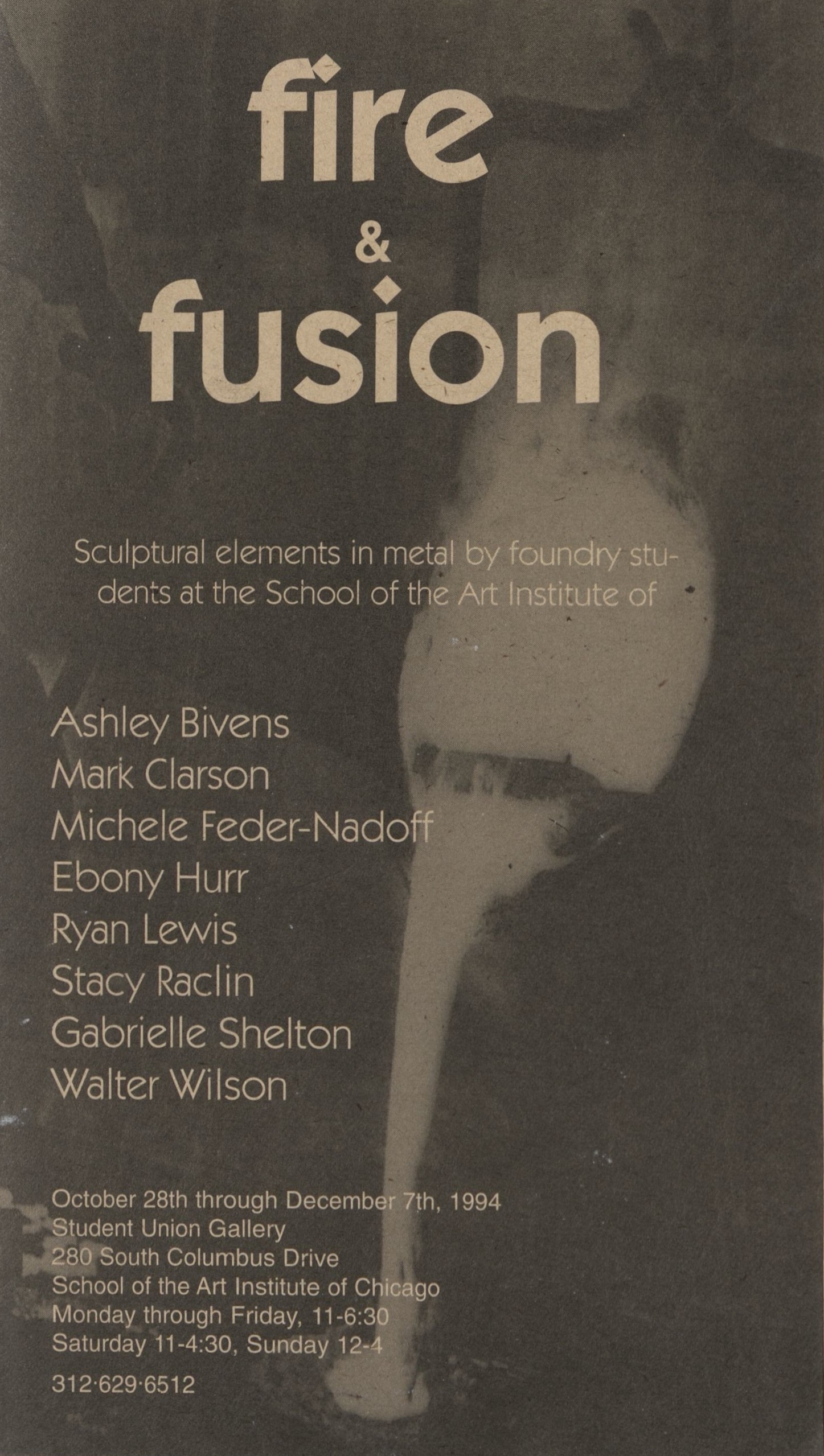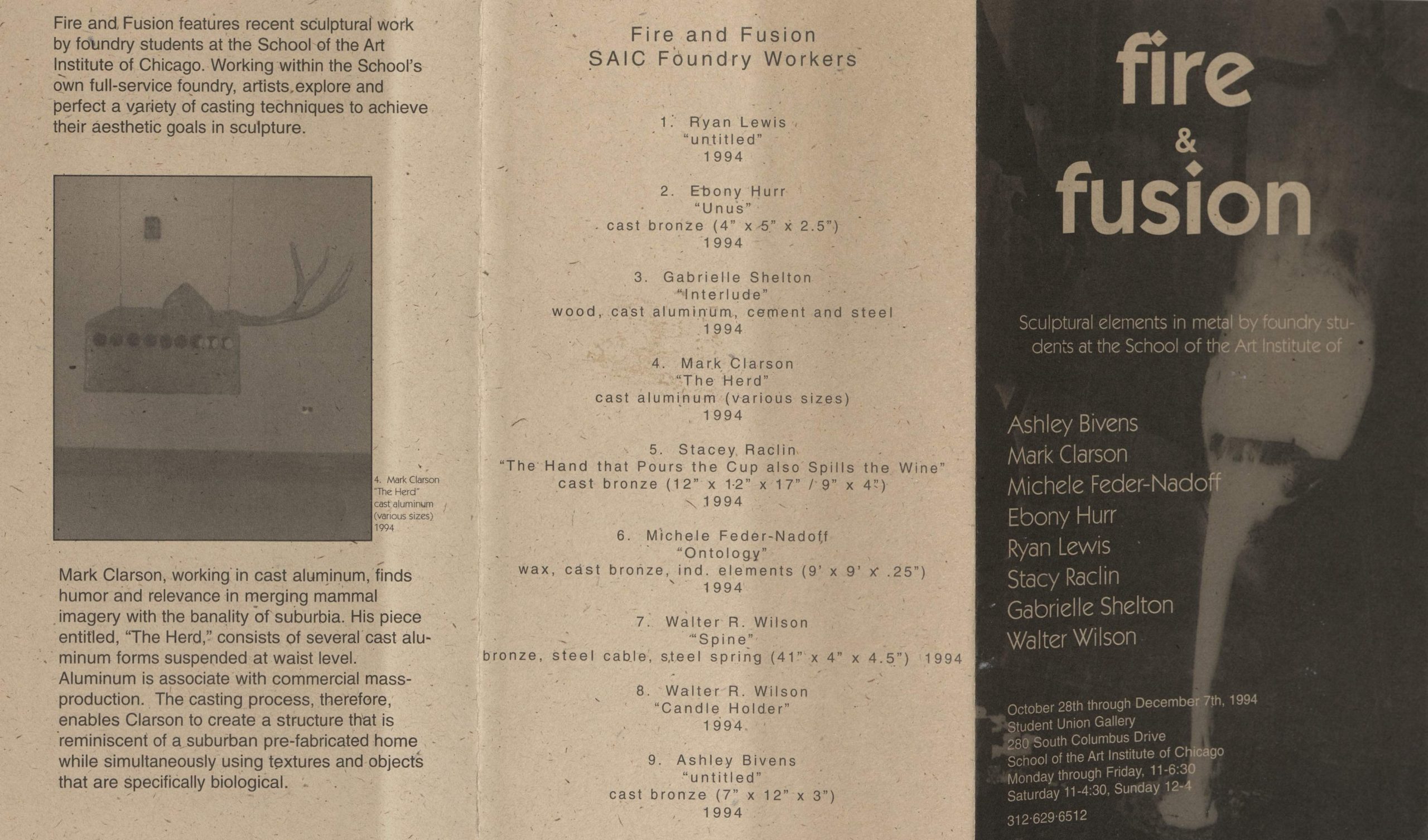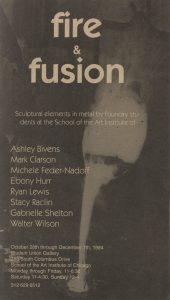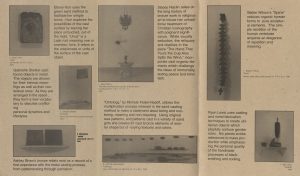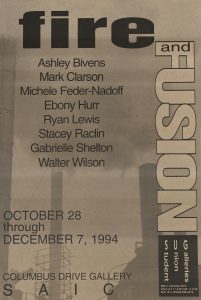Fire and Fusion
1994
October 28 – December 7
Gallery X
Contributing Artists
Ashley Bivens, Mark Clarson, Michele Feder-Nadoff, Ebony Hurr, Ryan Lewis, Stacy Raclin, Gabrielle Shelton, Walter Wilson
Exhibition Statement as Preserved in the SUGS/SITE Archives:
Fire and Fusion features recent sculptural work by foundry students at the School of the Art Institute of Chicago. Working within the School’s own full-service foundry, artists explore and perfect a variety of casting techniques to achieve their aesthetic goals in sculpture. Wbony Hurr uses the green sand method to facilitate her simple forms. Hurr explores the possibilities of the cast surface by leaving her piece untouched, out of the mold. “Unus” is a latin root meaning one or oneness; here it refers to the uniqueness or unity of the surface of the cast object. Gabrielle Shelton cast found objects in metal. The pbjects are chosen for their intrinsic meanings as well as their contextual ones. As they are arranged in the space, they form a new vocabulary to desribe conflicting personal dynamics an lifestyles. Ashley Biven’s bronze releifs exit as a record of a first experience with the metal cating process, from patternmaking through patination. Stacey Raclin relies on the long history of bronze work in religious art to infuse her untraditional treatment of Christian iconography with poignant significance. While visually seductive, the reliquary and chalices in the piee “The Hand That Pours the Cup Also Spills the Wine,” incorporate cast organic elements which challenge the ideas of immortality, lasting peace and blind faith. “Ontology,” by Michele Feder-Nadoff, utilized the multiplication process inherent in the sand casting method to make a statement about being and non-being; meaning and non-meaning. Using original wax patterns, and patterns cast in a variety of sand grits she creates 87 cast bronze elements of similar shape but of varying textures and colors. Walter Wilson’s “Spine” reduces organic human forms to pure sculptural elemets. The simple rendition of the human vertebrae acquires an elegance of repetition and meaning. Ryan Lewis uses casting and metal fabrication techniques to create utilitarian objects which playfully confuse gender roles. His pieces evoke references to mass production while emphasizing the personal quality of the handmade processes of black-smithing and cooling. Mark Clarson; working in cast aluminum, finds humor and relevance in merging mammal inagery with the banality of suburbia. His piece entitled, “The Herd,” consists of several cast aluminum forms suspended at waist level. Aluminum is associate with commercial mass-production. The casting process, therefore, enables Clarson to create a structure that is reminiscent of a suburban pre-fabricated home while simultaneously using textures and objects that are specifically biological.


